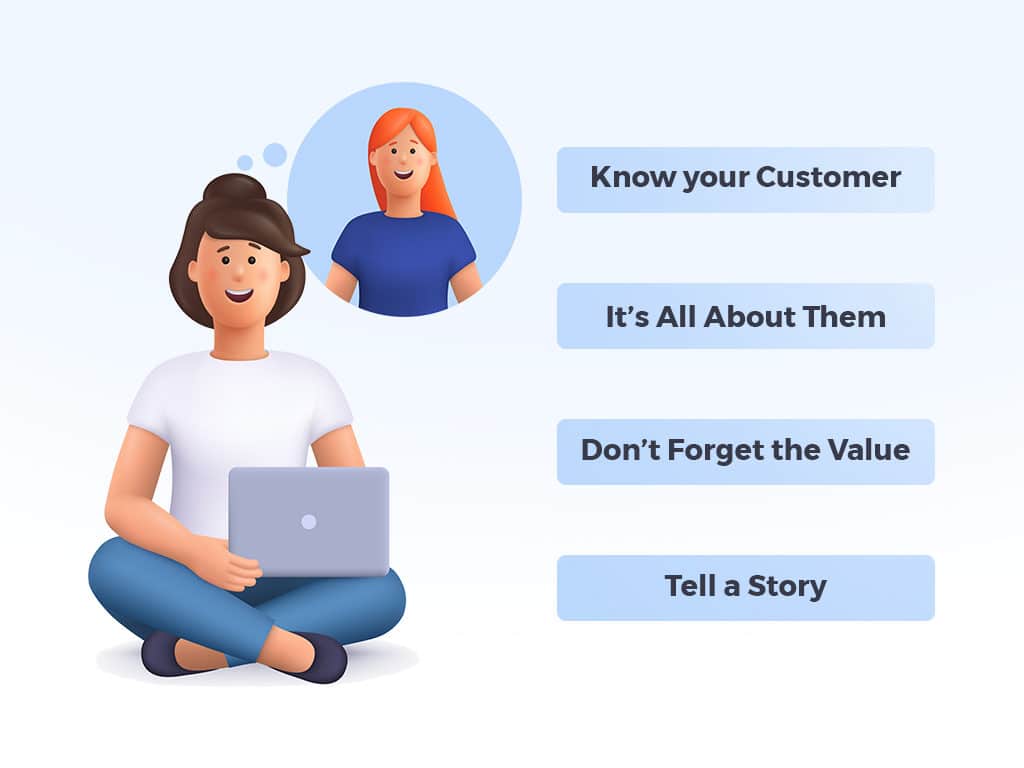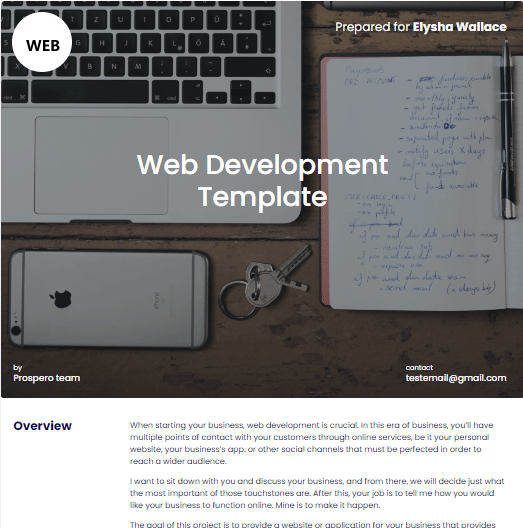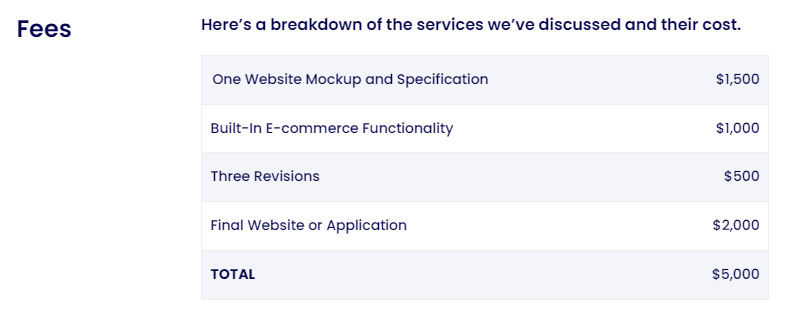You’re great at certain things as a freelancer or small web development business.
You’ve got a gift for coding, and an eye for the aesthetic that will ensure your customer’s websites meet their needs.
You know that you can deliver on time and to specification, but how do you communicate that to your potential clients?
The truth is that a proposal for website development needs to be more than an explanation of what you will do for the customer; it’s a sales document that needs to persuade your potential buyer that your business is the one that truly understands them and can deliver.
To help you do that, here are 10 ways to make your website proposal stand out from the crowd.

1. It starts in your marketing
The Association of Proposal Management Professionals has a separate qualification for the first phase of a proposal, known as Capture.
They have separated the pre-proposal activity to emphasize those great client relationships are the foundation of successful proposals.
The most important thing you can demonstrate to your clients is the value you bring to the project, and that message should be consistent through every interaction they have.
Make sure that your marketing reflects the service and finished product they can expect from you (you’ll find tips on how to improve your marketing here.)
2. Know your customer
Take time during the sales process to get to know your customer and their exact requirements, not just technically but what their aims are for the website.
What ‘pain points’ do they have around their existing solution that you can fix for them?
You might find that your client can’t answer many of the questions, and that’s why they are calling you in for the solution – if that’s the case, then your ability to step in and support them 100% of the way is a key selling point.
See also: 10 questions to ask your client before making a proposal.
3. Know your competition
If possible, ask your potential client who else they are considering; you’re unlikely to be the only company they have asked to pitch.
For freelancers and smaller businesses, you may be competing against the ‘free’ DIY web development packages offered by companies like WordPress and Wix.

If you can find out who else is pitching, take an objective look at their website and try to understand their strengths and weaknesses compared to yours. Also, create website templates and make sure that your site is easy to navigate, visually appealing, and informative.
Is there a way to make it clear in your proposal that you are a better fit for the client?
For example, your expertise with live chat. Note, this isn’t an opportunity to name and shame or bash your competition; be subtle.
If you know a competitor always slips with their timelines, emphasize your stats for on-time delivery, for example.
4. It’s all about them
The most critical piece of advice for writing a website proposal is to make sure that it is customer-focused.

It’s easy to talk about what you will do, what tools you’ll use, server specifications, bandwidth, and so on, but remember that your client is not an expert in what you do – that’s why they’re hiring you.
Instead of focusing on what you will do, keep emphasizing them. What does each of those decisions mean for them?

Will the website be easy for them to maintain? Does the server specification future-proof their needs, or provide added protection against reputation-damaging cyber attacks?
5. Keep costs realistic
Pricing is always the trickiest part of any proposal. You want to make sure that your costs are covered but remain competitive.
This can be where looking for a web development proposal example is handy, letting you see how others have approached the problem of working out what to charge and breaking it down.

Keep a checklist of what you need to include – and don’t forget to add a contingency to cover any issues that might arise.
Make sure you are clear about what the client will pay and when; do you want part or all of the payment upfront? How quickly do you expect them to settle invoices? This can all form a part of your proposal.
6. Don’t Forget the Value
The other element that can support a proposal is making sure you are clear about the value you are delivering for the client and that it isn’t just about costs.
Are you turning the project around quickly? Do you have particular expertise in their industry? Are there extras that you include above and beyond what the client is asking for?
These don’t necessarily need to relate to the project, either. It can also be a selling point to mention your company ethics, green credentials, or how you ‘give back’ to the industry or community.
Environmental and Social Governance (ESG) is becoming a more critical part of choosing a supplier, and your credentials can win or lose you a contract.
7. Risk Management
Things go wrong. It’s a fact of life, and you won’t win projects by pretending otherwise.
Showing that you have thought about things that might impact the successful delivery and have put mitigations in place is a key feature of a winning website development proposal example.
This is particularly key if you are a solopreneur – what happens to the project if you fall ill or get in an accident? Do you have a business continuity plan?
Even if you are a larger company, showing that you have considered possible stumbling blocks and know what you will do if something goes wrong goes a long way to winning the trust of a potential buyer.
8. Tell a Story
Make sure you structure your proposal to lead the buyer through the project from start to finish.
The cover letter or Executive Summary lets you outline what you will do for them, and the proposal should outline what you will do, how you will do it, and what that means for them, the end customer.

Illustrate that story with examples from other clients; case studies are a handy way of proving that you can do what you say, especially where things haven’t been plain sailing.
Bring relevant stats, too, but don’t blind the reader with science; make sure anything you put in is explained and linked to their needs and wants.
9. Jedi Mind Tricks
Even when a customer reads a business proposal, the adage is true – people buy from people.
You need to use your business proposal to connect with the customer and help them understand that you are the right person for the job.
One way to do this is by mirroring their requirements and the things that are important to them in your proposal.
For example, if they don’t call it a website but refer to it as a portal? You do the same.
If they call their customers ‘colleagues’ – you do it too. You don’t need to limit yourself to the proposal literature either; look at their website and their values and use phrases (or similar) to help them see what a great match you are.
This doesn’t have to be words either; the careful use of color can help bring a proposal to life.
Can you use a match of your brand colors and theirs? How do your logos look side by side? If they’re a great fit, then add them to headers and footers.
10. Live and Learn
You won’t always win. You might get beaten on price or lose out because one of your competitors is offering some added value that you didn’t.
If you don’t win, ask the client to spare a few minutes to explain where your proposal can be improved next time.
This isn’t just valuable information for you. It also shows the client that their business is essential and that you are constantly trying to improve.
And who knows, if the project goes awry with the provider they chose, they might just come back to you to take over based solely on how you took the L.
Still need help with your web development business proposal?
Writing a proposal is a whole different skill set from developing a website, and though we hope these tips can help, we understand that you might still be at a loss as to where to start.
Searching for ‘web development proposal samples’ may help. If you read a few different websites, you can pull the knowledge together to create your own way of writing a proposal that reflects your business.
A good way to get started is using a web development proposal template which will give you an outline structure that you can add to or amend as you see fit.
And as always, come back to our blog for more hints and tips on how to win those all-important business proposals.




